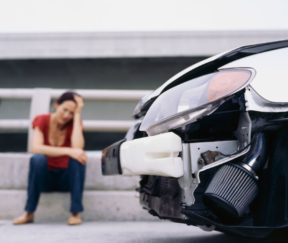
They can be life changing, injury causing, or even fatal. With car accidents inducing over 37,000 deaths per year, and injuring an additional 27-50 million people, the roads can indeed be a scary place.
If you or a loved one have been involved in a serious car accident, you’ll want to obtain the assistance of a law firm that understands the intricacies of the legal system, and who will work diligently to help you receive the restitution you deserve.
Common sense dictates whether it was a specific driver, cyclist, or pedestrian who acted carelessly and caused the accident. However, beyond figuring out who was negligent, Garcia Law Group, PLLC will help you to gather all relevant information to understand which laws were violated and what injuries were sustained, so that you can make a valid argument to the insurance company. The more “official” support that you are able to gather, the more your argument for who was at fault will be strengthened, and the higher the likelihood of you receiving the financial compensation your pain and suffering demand.
The following are a list of sources and documents that you will want to obtain in order to fully establish your evidence and claim.
Police Reports
Whenever there is an accident, especially when there has been an injury or fatality, police will make sure to create an accident report. These reports will take note of the incident, the officer’s understanding of what occurred, as well as the specific traffic violations that were broken by the negligent party. It may also state whether or not an officer issued a citation.
You should be able to get a copy of the police report at the traffic division department in your local law enforcement agency.
This document can serve as great support in showing that another party was at fault, especially if it mentions traffic laws that were violated, or provides examples of the careless driving that led to the injury or fatality.
Medical Attention & Reports
After a car accident, it is advised that you seek medical attention immediately. Though you may not directly feel the effects of the crash, serious injury could have possibly taken place that may not surface until the days following the accident.
Some symptoms to take notice of include:
- Unexpected pain
- Sudden discomfort
- An onset of dizziness
- Numbness in the limbs
Seeing a doctor promptly isn’t just the best thing to do for you or your loved one’s health; it also strengthens your personal injury claim.
Medical reports can be the foundation of your claim and are usually the most important form of evidence to back up your lawsuit. Without documentation of your medical visits, it can be difficult to establish an argument for injury, and can affect your law firm’s ability to negotiate a settlement on your behalf.
Reports should include, but not be limited to:
- Admitting charts and notes
- Physicians’ and nurses’ notes
- Medical narratives
- Diagnosis and prognosis
- Consultations
- Referrals
- Test results
- Medication receipts
Waiting too long – several days or weeks – can cause you more bodily harm and make it difficult to prove that your injuries occurred because of the crash.
Photos
Accident scenes are quickly cleared by police so as to provide safety for those involved as well as other drivers on the road.
Because of this, it is essential that you begin taking photos (if physically capable) as soon as the incident occurs. Collecting this sort of evidence can help to prove negligence and causation to the insurance company of the at-fault driver.
Taking numerous photos will help to create a “story” about the accident and serve as clear graphic evidence of property damage and injuries. When taking photos of the scene include:
- The location, as well as stop signs and traffic lights.
- The damage sustained by your car from multiple angles including up-close and long distance shots.
- Photos of the other vehicles involved in the accident and their position.
- Weather conditions that can help to disprove contentions about the role of weather in the accident.
- Injuries sustained at the site and any physical changes that happen the days following the crash.
Being proactive and taking photos at the scene of the accident, in conjunction with the other evidence we mentioned, will help you to present a much more compelling case and ultimately lead to a higher settlement offer.
State Traffic Laws
One other place to find support for your legal claims is in your state’s “Vehicle Code.” A version of these laws can usually be found at your local DMV and should be utilized to to find specific statutes that apply to your situation.

